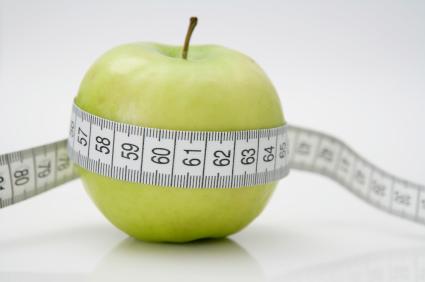Part 1 of Chapter 3 of Runaway Eating: what causes Runaway Eating, and who’s at risk?
Earlier on, we talked about stress and how we women can easily turn turn to food for comfort as a result. Why do only some actually become runaway eaters?
 There are some risk factors that are especially responsible. These are as wide-ranging as the media’s emphasis on thinness as beauty, or as personal as family history, or depression. The driving forces do remain the same. While having risk factors don’t ensure that you will get the condition, it does set the stage, so to speak. It might not actually start a fire, but the tinder is built up.
There are some risk factors that are especially responsible. These are as wide-ranging as the media’s emphasis on thinness as beauty, or as personal as family history, or depression. The driving forces do remain the same. While having risk factors don’t ensure that you will get the condition, it does set the stage, so to speak. It might not actually start a fire, but the tinder is built up.
First, we’ll look at the beauty factor. For years and years, women has been valued for her beauty. From Helen of Troy to Paris Hilton, those with beauty seem to have everything. They have wealth, love, adulation, jobs, and career advancement. Many of us spend lots of time and money on cosmetics, manicures, and pedicures. We flip through catalogues and women’s magazines looking for the latest styles.
The sad part is that to society, beauty equals thin/skinny/slim/slender. Most people cannot achieve the desired weight. They were not made for it. How can a big-boned woman like Oprah ever become a waif like Nicole Richie? It brings a terrible price, this pursuit.
The writers have compiled a short timeline for this.

Camille Clifford: the ideal Gibson Girl
The early 1900s. Thin becomes in. This is perhaps when it all started. Before this time, plump, full curves were the ideal. They indicated that the well-endowed woman was well-fed and didn’t have to work.
The early 20th century ended this trend of round people. Slim, trim, and slender was desired, perhaps to differentiate from the stocky immigrants that were pouring into the States. It was a symbol of good breeding and discipline. Heaviness, the women thought, meant laziness, greediness, and lack of self-control.
Charles Dana Gibson revolutionized our perceptions with the Gibson Girl. This woman appeared tall, very slim, fit, and athletic with a small waist. Her face was gorgeous. Naturally no one looked like this, or very few people. After all, she was merely a figment of the artist’s imagination, based on what he felt the ideal woman should look like. However, women felt bad about themselves or not achieving this goal.
Just then, a physical fitness craze hit the country. Clothes started to reveal more, making women feel self-conscious about their appearance.

The flapper.
1920s: This was the age of the flappers. These girls wanted to be free to dance, play sports, and lead more active lives than their mothers and grandmothers. No more corsets, sleeves, or skirts. Well, not really. But whatever was there barely scraped the top of their calves. Women’s anxieties skyrocketed, especially since the perfect flapper’s body was small, slim, and flat chested. Fad diets were in. Self-induced vomiting was in. Laxative abuse was in.
Advertisers took the chance to take advantage of women’s insecurities about themselves to talk about weight-loss equipment, fad diets, and much much more. The message here was: “Slim down and you’ll be beautiful and happy.”
1940s to 1970s. Thin becomes a fashion statement. We know from other reading that designers prefer skinny models. Why? Because skinny works like a hanger. Clothes hang on the lady with fewer wrinkles, while people with a little shape have more wrinkles because of their curves.

Twiggy
Along the way, the hanger lady became an object of beauty. But no one looked like a hanger. Big problem. Instead of seeing that this ideal was not only unattainable but also quite ridiculous, women conformed it. They lusted after it, starved to fit into it. The result was despair.
Twiggy, a 95 lb, 5 feet 6 teen model, exploded onto the fashion scene during the late 1960s. Her sticklike figure made everyone feel heavy, even slim women. Fashions left little to the imagination. People believed, “You can never be too thin or too rich.” Eating disorders, as a result, suddenly abounded.

Fonda
1980s. A fitness craze hit the nation. Jane Fonda turned out her famous exercise videos, urging women to “feel the burn.” The thin woman was apparently not only supposed to be hanger girl, but also have well-defined muscles, flat stomach, and a small, tight butt. Jane Fonda had all these things. Only later did people find out that she was bulimic. However, this look was impossible for most women. Those that succeeded did so only by spending hours at the gym, or starving, or purging.
1990s. Welcome to the era of the middle-aged woman who never gets old. Think about the 40-50 year olds (like Goldie Hawn or Demi Moore) who look like 20 year olds. These woman have an unusual combination of genes, along with personal trainers and plastic surgery. They have set a higher standard: looking your age is bad. You should be doing all you can to look young.

Demi Moore
I can’t deny that. It seems that every single magazine I open is filled with spreads and spreads of anti-aging commercials. It’s not just the commercials, either. Most women’s magazines include a beauty section which will inevitably include some creams and serums which will make you look younger. The product testing department also has a few products. Why? Because right now there’s a demand for such products. We want to look young. We want to look young now. We also want to continue to look young at age 50-60, just like Demi Moore. I don’t think Moore or Hawn are responsible for the problem, but the fact that the media commends them and emphasizes the fact that they still look young even at such an age makes most women feel inadequate for not being like that.

Goldie Hawn

 Raising children. This involves a lot of responsibility. Many women of this age may have small children, or college-aged kids. The little kids need to be watched all the time. (Oh! Oh! Stop eating that crayon!) The older kids have to be driven around to soccer practice, karate practice, ballet practice, band practice… and then there’s cleaning, baths, homework, meals, and the irregular poop in the bathtub instead of the toilet. Teenagers may be rebellious and push all your buttons. (Was that grunt disrespectful?) Teenagers are complex.
Raising children. This involves a lot of responsibility. Many women of this age may have small children, or college-aged kids. The little kids need to be watched all the time. (Oh! Oh! Stop eating that crayon!) The older kids have to be driven around to soccer practice, karate practice, ballet practice, band practice… and then there’s cleaning, baths, homework, meals, and the irregular poop in the bathtub instead of the toilet. Teenagers may be rebellious and push all your buttons. (Was that grunt disrespectful?) Teenagers are complex. Raising children is very rewarding, but extremely stressful at the same time.
Raising children is very rewarding, but extremely stressful at the same time.
 Financial burdens. Paying bills is, well, expensive. Taxes, insurance, groceries, cars, lessons, furniture, clothes, college, and weddings. The cost of living is higher in these modern times. Take weddings. The guy buys the girl a ring. It probably costs upwards of a thousand bucks. Then there’s hundreds for the cake, thousands for the dresses, and the limo that needs to be rented. All of this stuff isn’t paid by the bride herself, but by her family. Don’t even talk about the wedding reception, which is probably one of the most expensive parts of a wedding. My own parents had an in expensive reception at their church. Their friends pitched in to buy food and prepare for the event. My parents didn’t even rent a limo. Nowadays, couples go for the whole deal. They get a limo, a huge cake like the one on the right, expensive food, and a reception in a fancy hall with lovely decorations.
Financial burdens. Paying bills is, well, expensive. Taxes, insurance, groceries, cars, lessons, furniture, clothes, college, and weddings. The cost of living is higher in these modern times. Take weddings. The guy buys the girl a ring. It probably costs upwards of a thousand bucks. Then there’s hundreds for the cake, thousands for the dresses, and the limo that needs to be rented. All of this stuff isn’t paid by the bride herself, but by her family. Don’t even talk about the wedding reception, which is probably one of the most expensive parts of a wedding. My own parents had an in expensive reception at their church. Their friends pitched in to buy food and prepare for the event. My parents didn’t even rent a limo. Nowadays, couples go for the whole deal. They get a limo, a huge cake like the one on the right, expensive food, and a reception in a fancy hall with lovely decorations. Relationship troubles. They don’t call it a midlife crisis for nothing. You hear in the news of adult males suddenly running off with the young secretary. Because of all the demands on time, couples tend to leave their relationship at the bottom of the list of priorities. Both spouses are busy and overworked. Some people get divorced during this time because the marriage can no longer stand the strain. Marriage isn’t as fun as when they both started on their honeymoon. They might feel trapped, and the absence of butterflies is noticed. Maybe they’ll stay together just for the kids, but when the kids go to college, the parents feel that they don’t have to stay together anymore.
Relationship troubles. They don’t call it a midlife crisis for nothing. You hear in the news of adult males suddenly running off with the young secretary. Because of all the demands on time, couples tend to leave their relationship at the bottom of the list of priorities. Both spouses are busy and overworked. Some people get divorced during this time because the marriage can no longer stand the strain. Marriage isn’t as fun as when they both started on their honeymoon. They might feel trapped, and the absence of butterflies is noticed. Maybe they’ll stay together just for the kids, but when the kids go to college, the parents feel that they don’t have to stay together anymore. Divorce can be described as a sort of death — the death of a way of life. It inevitably brings stress. She has to deal with the loss of a loved one, emotionally wounded children, custody battles, loss of money, and many other adjustments. Often times, the woman ends up raising her children alone or sharing custody with the father.
Divorce can be described as a sort of death — the death of a way of life. It inevitably brings stress. She has to deal with the loss of a loved one, emotionally wounded children, custody battles, loss of money, and many other adjustments. Often times, the woman ends up raising her children alone or sharing custody with the father.
 Part 1 of chapter 1 of Runaway Eating: Not for Teenagers Only
Part 1 of chapter 1 of Runaway Eating: Not for Teenagers Only The book Runaway Eating by Cynthia M. Bulik, Ph.D., and Nadine Taylor, M.S., R. D. takes a good look at this trend. They also include an 8 point plan to help conquer this kind of thinking. (I will not go through the 8 point plan because there’s a lot of books to read.) This book, is, however, designed to help the reader make informed decisions about health, and is not a medical manual by any means. And if you are suffering from an eating disorder, it’s best to seek a doctors help rather than to turn to a book alone.
The book Runaway Eating by Cynthia M. Bulik, Ph.D., and Nadine Taylor, M.S., R. D. takes a good look at this trend. They also include an 8 point plan to help conquer this kind of thinking. (I will not go through the 8 point plan because there’s a lot of books to read.) This book, is, however, designed to help the reader make informed decisions about health, and is not a medical manual by any means. And if you are suffering from an eating disorder, it’s best to seek a doctors help rather than to turn to a book alone. Runaway eating runs rampant through society. However, using food as a solution for your problems is no solution at all, as women find out.
Runaway eating runs rampant through society. However, using food as a solution for your problems is no solution at all, as women find out.
 Researchers found the most body-image related messages in videos like Cinderella and The Little Mermaid. However, all ages get information about the world from TV. IF there’s one rule governing media images, it’s that sex sells.
Researchers found the most body-image related messages in videos like Cinderella and The Little Mermaid. However, all ages get information about the world from TV. IF there’s one rule governing media images, it’s that sex sells. 




 Whether or not that is true, it’s found that the diet industry generates 74 billion – 50 billion DOLLARS a year. Women compare their bodies to those around them. a 1984 poll by Glamour found that three-fourths of those surveyed thought they were too fat. This brings to mind my friend who always wants to lose weight, even though she is really skinny. I’m a 4 foot 8 girl, and naturally I’m very very skinny. (It goes with my frame.) She told me once that she wanted to be as skinny as I was. I was disturbed.
Whether or not that is true, it’s found that the diet industry generates 74 billion – 50 billion DOLLARS a year. Women compare their bodies to those around them. a 1984 poll by Glamour found that three-fourths of those surveyed thought they were too fat. This brings to mind my friend who always wants to lose weight, even though she is really skinny. I’m a 4 foot 8 girl, and naturally I’m very very skinny. (It goes with my frame.) She told me once that she wanted to be as skinny as I was. I was disturbed. Cindy Maynard, a registered dietitian and researcher, says that this dissatisfaction occurs so much that it’s almost considered normal. She goes on to say that the most vulnerable people are teenagers, since they are at the age when they’re developing their self-confidence and self-perception. At that age there’s a lot of pressure to fit in.
Cindy Maynard, a registered dietitian and researcher, says that this dissatisfaction occurs so much that it’s almost considered normal. She goes on to say that the most vulnerable people are teenagers, since they are at the age when they’re developing their self-confidence and self-perception. At that age there’s a lot of pressure to fit in. Smoking induces premature aging. Smoking makes you older, faster. Don’t smoke, kids.
Smoking induces premature aging. Smoking makes you older, faster. Don’t smoke, kids.  If you have excess fat and skin: Well, ok, this is a good idea. Localized fat deposits may require liposuction. It can help restore your self-esteem and sexiness. Getting a procedure might help you feel better about yourself and bring the romance back in the relationship. I have no argument against this type of surgery, actually. There was this guy who was really morbidly obese. He was on Oprah’s talk show. Anyway, he decided that he should have a change for the better. He lost all the weight, but there was all this loose skin and some fat flapping around. He ended up having surgery, and he looked amazing. It really helped him out there.
If you have excess fat and skin: Well, ok, this is a good idea. Localized fat deposits may require liposuction. It can help restore your self-esteem and sexiness. Getting a procedure might help you feel better about yourself and bring the romance back in the relationship. I have no argument against this type of surgery, actually. There was this guy who was really morbidly obese. He was on Oprah’s talk show. Anyway, he decided that he should have a change for the better. He lost all the weight, but there was all this loose skin and some fat flapping around. He ended up having surgery, and he looked amazing. It really helped him out there. You also need to have lots of moolah. In one of my other blogs, I wrote about the
You also need to have lots of moolah. In one of my other blogs, I wrote about the